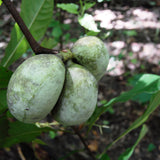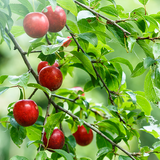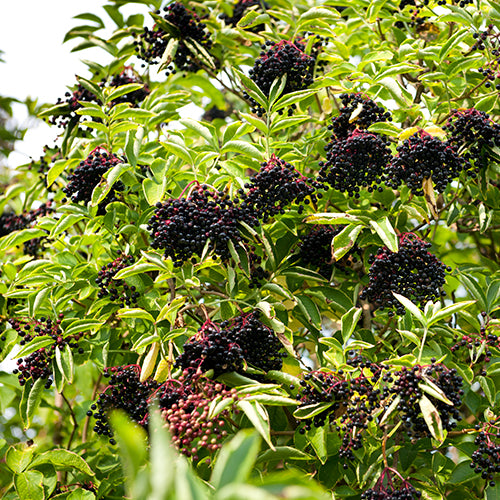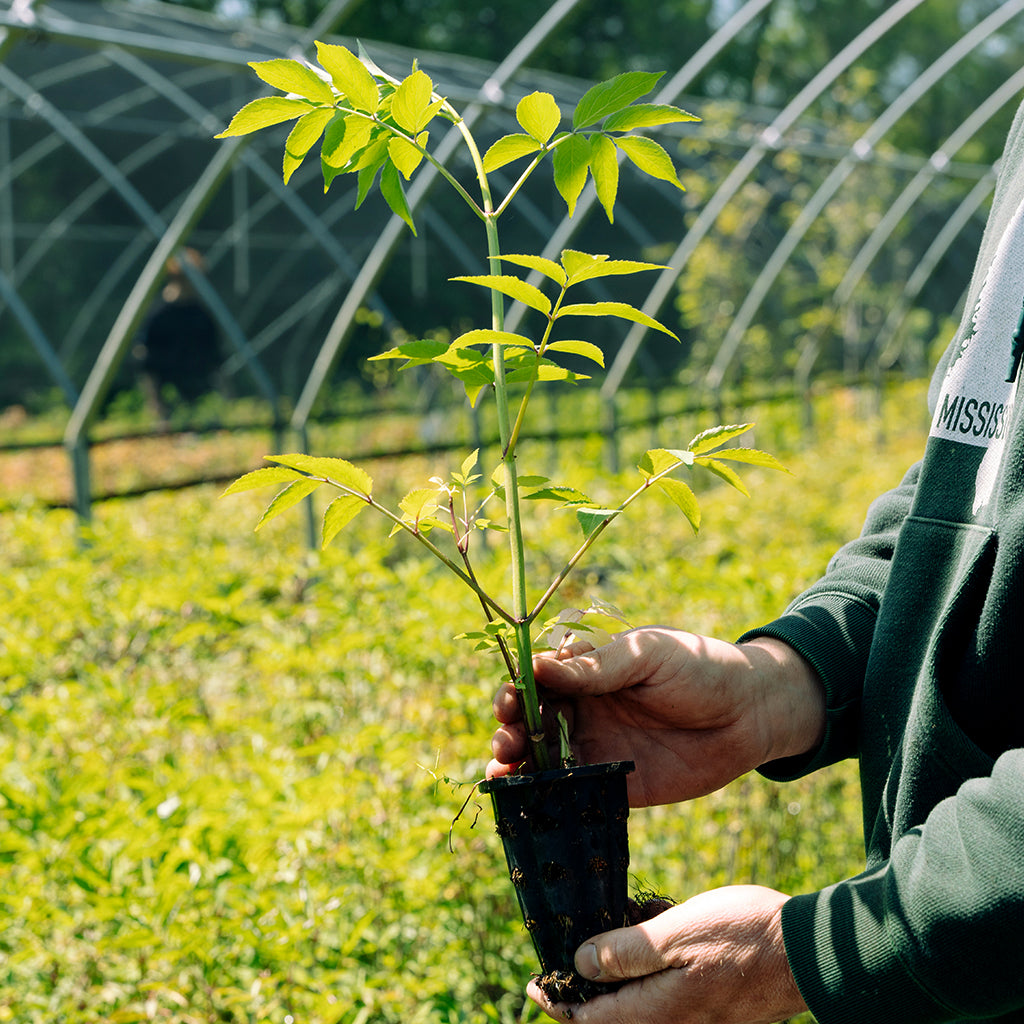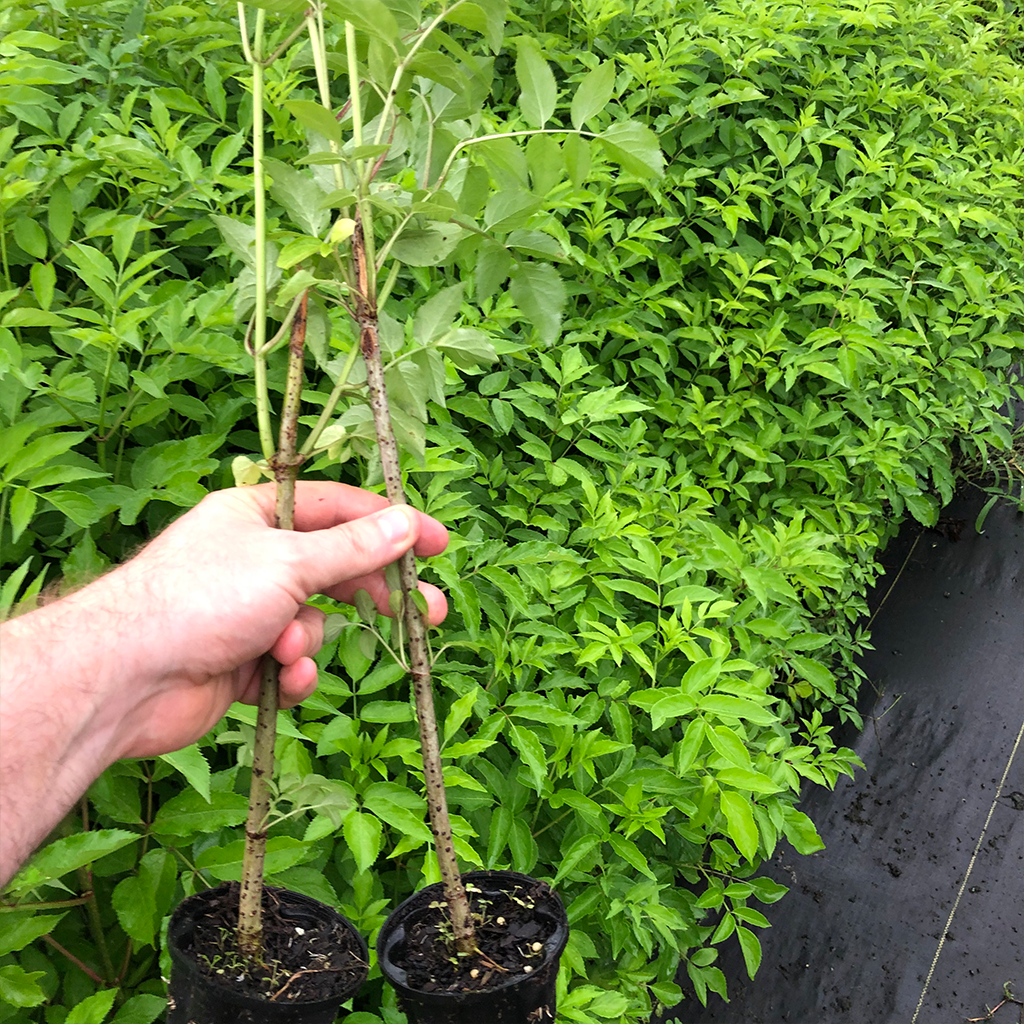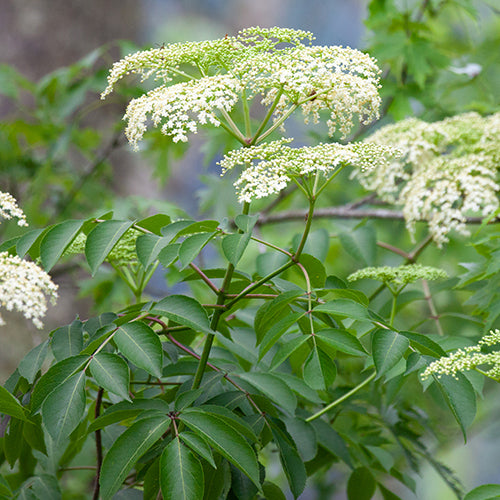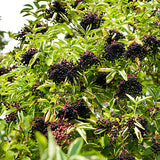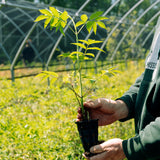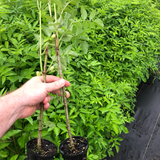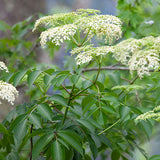Elderberry (Sambucus canadensis)
The elderberry genus has been in the spotlight quite a bit lately for its medicinal value at helping to stave off sickness. And it’s no snake oil either, as science has proven most of the traditional claims are indeed true. In fact, many medical doctors will recommend the use of elderberry to shorten the duration of colds and flu’s. Their makeup consists of lots of healthy, but hard to pronounce and spell components that we know are good for us such as: antioxidants, anthocyanins, and flavonols. They are also high in vitamin C, potassium, and phosphorus. All parts of the plant can be utilized, but the berries and the flowers seem to be the most important and most widely used. For full disclosure, there are a few negative side effects that can happen with the use of elderberry, so do your diligence and read up on it before making any syrups or concoctions prior to consumption.
We are very interested in the human use aspect of this plant, and intend on us and our customer friends using this plant at home, however, our passion is wildlife first and foremost. Elderberry (especially the more wild type grown from seed that we offer) is a fantastic plant for everything from beneficial insects to whitetail deer and humans. The blooms are usually covered in bees and other beneficial insects and have a fantastic odor. The foliage is a top food choice by deer and other critters. And the berries don’t last very long once the birds discover them. There are clonal selections that have berries that ripen more evenly and slightly easier to process than the wild types, but the wild types are by far better for wildlife and pollinators. This perennial plant can reproduce from seed and cuttings.
Although it’s common to find elderberry plants growing on the side of the road along ditches, it much prefers deep, fertile, well drained soils and mulch. In order for them to branch out, a cage would be the best way to protect these instead of a tree protector.
| Zone: | 4 - 9 |
| Soil pH: | 5.0 - 7.0 |
| Wildlife Value: | Excellent |
| Site Preference: | Will live in many sites, most commonly found on sites with deep, fertile, well drained soils and mulch. |
| Fruit Maturity Date: |
Harvest season generally occurs from mid-August to mid-September, depending upon your region and the cultivar. |








